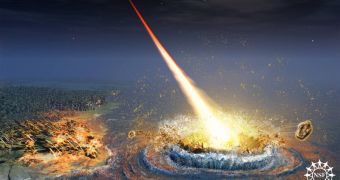Over the past few years, astronomers have begun drawing attention to the fact that protecting against near-Earth objects (NEO) and other space threats should climb to a higher position on our priority lists.
This stands to reason when looking at the statistics. Expert say that as much as a million small space rocks hit Earth's atmosphere every day, burning up as they try to make their way to the surface.
While they are relatively harmless, some of these rocks are replaced by bigger ones at somewhat regular intervals. Astronomers say that an impactor 500 meters in diameter or larger hits the planet once every 10,000 years or so.
These behemoths can cause extinction events, destroying nearly all life on the planet, and there is ample evidence that this happened at least 6 times in Earth's distant history.
Additionally, once every 200 to 300 years, Tunguska impactor-sized rocks can detonate in the atmosphere, with forces many times larger than those of an atomic bomb.
This category of intermediate space rock produce vast amounts of damage, especially if they hit in populated areas. Thus far, this hasn't been the case, but then again we didn't have such a high density of major cities everywhere millennia ago.
“Those are the objects we are concerned with. We need to take action now to bring the world together and recognize this as a global threat so that we can make a cooperative international decision to act to extend the survival of life on Earth,” said Rusty Schweickart.
The former Apollo Program astronaut spoke recently at a 3-day workshop on space security, which was held in Darmstadt, Germany, Universe Today reports.
The goal of the meeting is to develop plans and related recommendations for governments, for coordinating the fight against and the response to asteroid threats at a global level.
Studies propose that there are at least one million NEO in Earth's vicinity, and that a large number of those objects can cause significant damage, or an extinction event, if they hit.
“What’s new is that we have now opened our eyes via telescopes and are seeing something flying by our heads, so to speak. When you see something flying by your head, you duck,” the former astronaut told the media at a press conference.
“It turns out we have the capability of ducking and causing these objects to miss us. Because we now know about this threat and because we can in fact prevent an impact, we then have a moral obligation to do so,” he went on to say.
Scientists have been working on potential methods of deterring NEO for years, so the theoretical background is there. All that's needed are studies to show which of the methods are feasible, and the will to implement them at a global scale.

 14 DAY TRIAL //
14 DAY TRIAL //